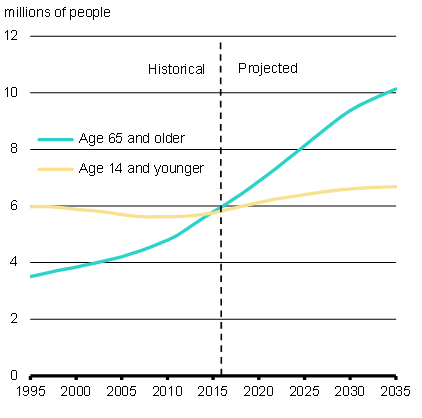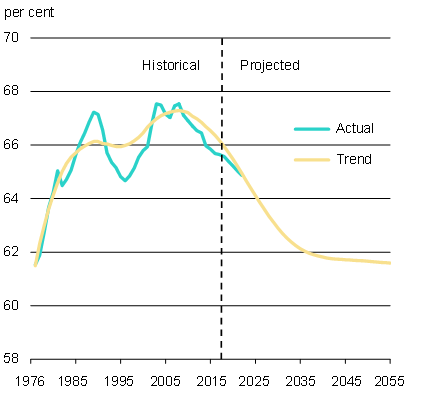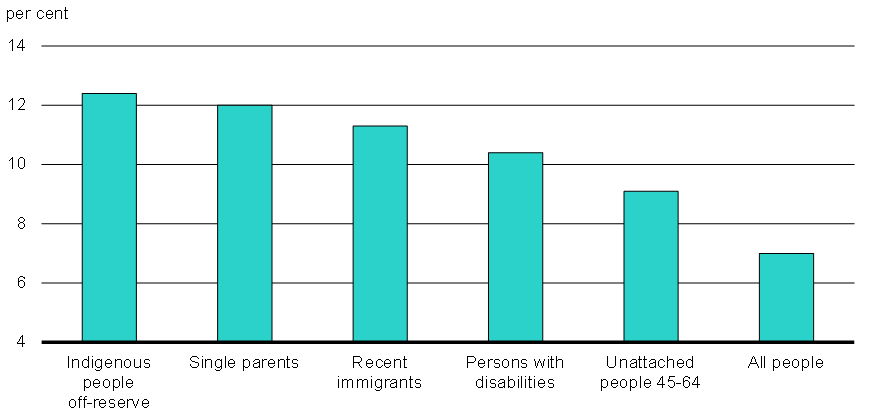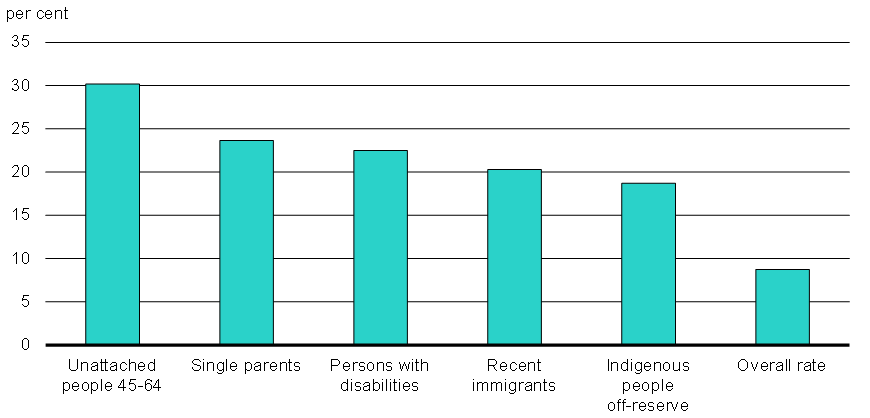This page has been archived on the Web
Information identified as archived is provided for reference, research or recordkeeping purposes. It is not subject to the Government of Canada Web Standards and has not been altered or updated since it was archived. Please contact us to request a format other than those available.
Introduction
“As we mark Canada 150 over the next year…we will celebrate the courage and vision of those who came before us, and the hard work and ambition of Canadians—like you—who have made Canada the success story that it is today.”
Canada at 150
In 2017, the 150th anniversary of Confederation gives all Canadians an opportunity to celebrate, to reflect on Canada’s past, and to chart a course for the future.
Over the course of 150 years, Canada’s progress has been rapid. Together, Canadians have built something remarkable—a country that is both united and diverse, made stronger through our differences.
The Canada we know today is the result of the creativity, sacrifice and hard work of its people.
At the centre of the Canadian story is the middle class and the promise of progress: that with optimism and hard work, a better life is possible for everyone.
Middle class Canadians embraced the change that came along with progress because they could see the benefits for their families—new, well-paying jobs, stronger communities, and greater opportunities for their children.
Generation after generation, Canadians worked hard, confident that more opportunities and greater success would be their reward. Canadians have championed equal access to these opportunities, paving a better path for others.
With this budget, the Government will continue to uphold the promise of progress, for the benefit of all Canadians.
A Story of People and Progress
The story of Canada is the story of hard-working people—from fisheries workers in Atlantic Canada to forestry workers in Quebec, from the farmers who feed us to the tradespeople who build our cities to the teachers who give young Canadians the tools they need to embrace their own futures.
The confidence, optimism and ambition of Canadians helped to make Canada the country it is today.
Together, Canadians built the railways and seaways that opened up our country to the world, and invented technology that connects people globally.
Knowing that better is always possible, Canada built world class public institutions—home to innovators who are relentless in their search for new ways to treat and prevent illness, generate clean energy and push the boundaries of digital technology.
Working together brought about universal health care, parental leave, the Canada and Quebec Pension Plans and the Canadian Charter of Rights and Freedoms.
From the sparse beauty of Qausuittuq National Park in Nunavut to the quiet green space of Rouge National Urban Park in the heart of Canada’s largest city, Canadians have always celebrated our rich natural heritage and taken steps to protect these national treasures for generations to come.
And we have built a reputation for welcoming new Canadians, extending help and hope to those fleeing war and violence, and creating good, well-paying jobs through international trade. The result is a country where diversity is recognized as a source of strength—and part of our unique Canadian identity.
Canada’s success over the past 150 years did not happen by accident and will not continue without effort.
With Budget 2017, the Government will continue to deliver the things that matter most to Canadians: good jobs, healthy living, strong communities, and better opportunities for future generations. It is a budget that represents the Government’s continued commitment to investing in Canada and Canadians in an effective and fiscally responsible way.
By taking action today—investing in the things Canadians need to succeed now and well into the future—Budget 2017 will help deliver a growing economy that works for every Canadian.
The Challenge of Change
Since its founding a century and a half ago, Canada has seen tremendous change.
At the time of Confederation, the telephone was still a decade away; now, Canadians connect to each other instantly. The Internet has revolutionized the way many Canadians work. While change brings many benefits, the rapid pace of progress today can cause some to worry about the future and their place in it.
For generations, Canadians could be assured of finding well-paying jobs that would allow for a good standard of living, a secure retirement and the means to offer their kids a great education and path to success.
Today, the evolving nature of work means that people often change jobs many times over the course of their working life, and many young families face difficult choices about where to live, and what kind of work to pursue.
The anxiety felt by many Canadians is understandable, but not insurmountable. Addressing these concerns starts with keeping the fundamental promise that has guided Canada’s growth since its earliest days: that hard work will be rewarded, and that every Canadian can have a real and fair chance at success.
The Government believes that a growing economy that works for all Canadians starts with equal opportunity to good, well-paying jobs. This is true both for the middle class and for those working hard to join it. At a time when innovation and advances in technology are changing the way that Canadians work, the best way to ensure that all Canadians are prepared for the jobs of the future is to provide constant opportunities to learn new skills. This means continuing to break down the barriers to full participation in Canada’s society and economy.
Canada will succeed when there are more opportunities for Canadians to contribute at every stage of their lives—from students looking for their first job to families raising their children to seniors transitioning into their retirement years. As a nation, we have long recognized that access to quality public health care is a guarantor of our success, a need that has only become greater for those seeking mental health treatment and caring for aging loved ones.
Those who have not always shared in Canada’s success must also be included. Canada’s future depends on making sure that our economy works for everyone, especially in industries that have traditionally had a gender imbalance.
Canadians have never shied away from hard work. By building an economy where the benefits and opportunities are shared, where everyone contributes their fair share, and where Canadians can learn, train and retrain, we can keep Canada’s promise of progress.
Real Change for Canadians
Budget 2016 focused on strengthening and growing the heart of Canada’s economy: the middle class.
In that first budget, the Government took steps to deliver real help and hope to the middle class and all those working hard to join it.
Last year the Government:
- Introduced a middle class tax cut for nearly nine million Canadians. Single Canadians who benefit are saving an average of $330 each year and couples who benefit are saving an average of $540 each year.
- Introduced the new, tax-free Canada Child Benefit. This new benefit delivers more help to those who need it most, such as single mothers. With the Canada Child Benefit, nine out of 10 families receive more help than they did under previous programs. These families will see an average increase of nearly $2,300 in their child benefits in the first year.
- Reduced child poverty. With the introduction of a more generous and better-targeted Canada Child Benefit, approximately 300,000 fewer children will be living in poverty in 2017 compared with 2014, representing a reduction of about 40 per cent in overall child poverty.
- Made post-secondary education more affordable. In 2016, the Government increased Canada Student Grants by up to $1,000 per year for post-secondary students from low- and middle-income families, putting more money in the pockets of over 360,000 full-time and part-time students each year.
- Increased income support for vulnerable seniors. With enhancements to the Guaranteed Income Supplement, 750,000 seniors now receive more money each month, representing an increase of up to $947 per year for Canada’s most vulnerable seniors. This will help to lift 13,000 seniors out of poverty.
- Made an historic investment of $8.4 billion to support Indigenous communities. Increased funding is already resulting in better-quality education for on-reserve First Nations youth, improved living conditions in First Nations and Inuit communities, and economic development support for Métis.
To improve income security and help families make ends meet, the Government also:
- Made Employment Insurance (EI) regular benefits easier to access for an additional 50,000 new entrants and re-entrants to the labour market, such as young Canadians and recent immigrants, and extended EI work-sharing benefits to 33,000 employees.
- Reduced the waiting period for all types of EI benefits, which will help approximately 1.8 million EI claimants to make ends meet.
- Extended the EI Working While on Claim pilot project, which will help nearly 700,000 workers.
- Extended EI regular benefits in regions affected by the downturn in the commodities sector, which is expected to help over 235,000 workers.
Recognizing the important role infrastructure plays in building strong communities, creating jobs and growing the economy, Budget 2016 provided $11.9 billion over five years to support public transit, green infrastructure and social infrastructure. In addition, the 2016 Fall Economic Statement announced an additional $81.2 billion over 11 years, starting in 2017–18 , in support of public transit, green infrastructure, social infrastructure, transportation that supports trade, Canada's rural and northern communities, and smart cities. This funding will:
- Improve the way that Canadians live, move and work. Transit investments will allow Canadians to benefit from shorter commute times; reduced air pollution; access to more good, well-paying jobs; and stronger economic growth.
- Help ensure that Canada’s communities are healthy and productive places to live. Investments in green infrastructure will help deliver cleaner air and water, and will help Canada’s communities adapt to the challenges that come with an already changing climate.
- Support stronger, better neighbourhoods for our families, thanks to investments in social infrastructure. These investments reflect Canadians’ commitment to each other, and to our children and grandchildren.
Many of the actions taken and investments made require close collaboration with partners, both at home and around the world. Working together always delivers better results.
Since taking office, the Government has made those partnerships a priority, and this commitment to shared progress has delivered meaningful results for Canadians, including:
- The signing of the Comprehensive Economic and Trade Agreement with the European Union, giving Canadian businesses better access to one of the world’s largest markets and helping employers create more of the jobs Canadian families need.
- An agreement with the provinces and territories to strengthen the Canada Pension Plan, increasing, over time, maximum retirement benefits for contributors by up to 50 per cent.
- The Pan-Canadian Framework on Clean Growth and Climate Change, an agreement developed with the provinces, territories and Indigenous partners that will build a strong, clean economy; foster innovation; create new, well-paying jobs; and build a healthy environment for future generations.
- Continuing support for a strong public health care system Canadians can count on, with transfer amounts to provinces and territories that continue to grow through the Canada Health Transfer, and that are expected to total approximately $200 billion over the next five years.
- A 10-year commitment to stable, long-term funding in home care and mental health services for all Canadians, which has led to health agreements with New Brunswick, Newfoundland and Labrador, Nova Scotia, Yukon, the Northwest Territories, Nunavut, Saskatchewan, Prince Edward Island, British Columbia, Alberta, Ontario and Quebec.
- A strong and enduring relationship with the United States, Canada’s largest trading partner.
“The moderately expansionary policy stance in the 2016 federal budget will help to speed the economy’s return to full employment.”
As the next phase of the Government’s long-term economic plan, Budget 2017 builds on these successes—which have helped to further position Canada as a leader on the world stage—and takes care to ensure that investments benefit Canadians in a fair and equitable way.
Canada’s Place in a Time of Change
Although much work has already been done to expand opportunities for Canadians, challenges persist. The way that Canada responds to those challenges will define the opportunities that exist now, and for years to come.
Some of these changes are happening here at home. Canada’s population is aging, and there are now more seniors age 65 and over than there are people under the age of 15. This demographic shift means that there will be fewer Canadians available to participate in the workforce, putting a strain on future growth in the economy.


Unemployment Rates for Selected Groups of Canadians (2016 or Most Recent Year)

Low Income Rates for Selected Groups of Canadians (2014 or Most Recent Year)

To offset this risk, Canada must do more to invest in the next generation of workers, and do more to give every Canadian—including those traditionally underrepresented in the workforce—greater opportunities to succeed.
A Long-Term Plan to Strengthen and Grow the Middle Class
Budget 2017 is the next step in the Government’s long-term plan to create jobs and strengthen the middle class. Canada is already home to a well-educated and highly skilled workforce, but as the demands of the workplace change, so too must the education and skills workers bring to their jobs.
With its strong focus on innovation, skills, partnerships and fairness, Budget 2017 takes the next steps in securing a more prosperous future for all Canadians. This budget is playing to our strengths as a country: giving talented and creative people the skills they need to drive our most successful industries and high-growth companies forward, and investing in Canadians’ well-being through a focus on mental health, home care and Indigenous health care.
The changes in the economy—both here at home and around the world—present incredible opportunities for middle class Canadians. Our future success as a country will be determined by our ability to prepare for and adapt to change.
The Case for Innovation
To strengthen and grow the middle class, and remain competitive in the global economy, Canada must do more to encourage innovation. The future success of all Canadians relies on it.
Innovation is, simply put, the understanding that better is always possible. It is the key that unlocks possibilities and opportunities. From urban centres to rural farms, from researchers looking to secure new patents to entrepreneurs working to bring their products to market, innovation is what allows Canadians to adapt to change and prepare for the future.
Innovation helps to create new jobs in growing industries and transforms jobs in existing ones. That means new and exciting job prospects for Canadian workers—good, well-paying jobs today, and even better opportunities for our children.
For many, the rapid pace of change—particularly when it comes to technology—is also a source for concern. Workers worry that they might lose their jobs to automation, and students wonder if the skills they are learning today will be relevant once they are ready to join the workforce.
The Government understands those concerns, and that’s why its approach to innovation is centred on what Canadians need to succeed in an evolving economy.
| Year | #1 | #2 | #3 | #4 | #5 |
|---|---|---|---|---|---|
| 2001 | General Electric (Market cap: $406 billion) | Microsoft (Market cap: $365 billion)* | Exxon (Market cap: $272 billion) |
Citi (Market cap: $261 billion) |
Walmart (Market cap: $260 billion) |
| 2016 | Apple (Market cap: $582 billion)* |
Alphabet (Google) (Market cap: $556 billion)* |
Microsoft (Market cap: $452 billion)* |
Amazon (Market cap: $364 billion)* |
Facebook (Market cap: $359 billion)* |
Startup Success
Vidyard was founded by two University of Waterloo grads as part of their senior project in 2011, when they recognized the potential of video to improve business revenue. Since then, they have raised more than $75 million in investment, built a team of 180 employees in downtown Kitchener, Ontario, and created a video platform used by market leaders from Citibank to LinkedIn to turn viewers into customers. Their latest product, ViewedIt, is changing business communication with a tool that allows users to create, send and track their own personalized videos through email.
Clean Technology Success
CarbonCure Technologies Inc. is a leading carbon dioxide-utilization technology provider founded in 2007 and based in Halifax, Nova Scotia. Recently, CabronCure announced that it was named in the prestigious Global Cleantech 100, which features private companies that are best positioned to solve tomorrow’s clean technology challenges and have the highest potential to make significant market impact within a 5-10 year timeframe. CarbonCure technology enables concrete manufacturers to convert waste carbon dioxide into solid minerals, which helps concrete producers to lower their greenhouse gas emissions while improving the material performance of concrete.
Done right, innovation not only helps to strengthen and grow the middle class, it opens up possibilities for improving our quality of life: better, more effective health care; smarter, more connected cities; and cleaner, more sustainable energy, among many other examples.
An innovative Canada is a healthier, stronger, more prosperous Canada.
Budget 2017: Building a Strong Middle Class Through Innovation
Innovation starts with smart, creative and skilled people.
We have an opportunity to be one of the most innovative and competitive countries in the world. To achieve that goal, we need a workforce that continues to be among the most skilled in the world.
Attracting investment and talent to Canada will be key, along with taking concrete steps to equip Canadians with the skills they need to get the most out of an innovation-driven economy.
Budget 2017 addresses these challenges and includes new initiatives aimed at making Canada a true nation of innovators.
International rankings—on many measures—demonstrate that Canada is well-positioned to lead global innovation. Canada ranks:
- 1st in the OECD with the most highly educated workforce.
- 1st in the Group of Seven (G7) for overall business cost competitiveness.
- 2nd in the G7 for openness to trade and investment.
- In the top 5 in the OECD in terms of access to training to start a business, making Canada an environment conducive to entrepreneurship.
- 3rd in the Global Entrepreneurship and Development Institute’s Global Entrepreneurship Index.
Canada is also recognized for its strong science capacity. According to the Council of Canadian Academies, Canadian researchers are highly collaborative on the international stage, and rank 6th in the world when it comes to highly cited research.
Innovation on its own does not ensure that all Canadians have an opportunity to be a part of the changing economy. We have to give all Canadians a real and fair chance to succeed.
Canada’s future success depends on building an economy that is as inclusive as it is innovative. The Government’s long-term plan to grow the economy will only succeed when everyone benefits from the opportunities that result. We will invest in helping Canadians gain the new skills and experience they need to get ahead.
The Government is committed to creating opportunities for all Canadians to do well.
Budget 2017 reflects that commitment:
Skills, Innovation and Middle Class Jobs—To make the most of the opportunities that the new economy offers, the Government will equip Canada’s workers with the skills and tools they need to succeed. It will also make big bets in high-growth sectors of the economy, including clean technologies, digital industries and agri-food, to secure Canada’s place as a world-leading centre for innovation. This approach will create good, well-paying jobs and lead to a strong and growing middle class.
Communities Built for Change—Canada is investing in its future to transform our communities, create middle class jobs and generate clean, sustained growth. Ten years from now, our towns and cities will be more connected, our air and water will be cleaner, our kids will receive better care, and our neighbourhoods will be more livable. And to give everyone a real and fair chance at success, more Canadians will have access to an affordable and dignified place to raise their family.
A Strong Canada at Home and in the World—We simply cannot claim success as a country unless everyone has a real and fair chance at success. Health and wellness, safety and security, inclusion and opportunity go hand in hand. Making sure that all Canadians can achieve their full potential is—and will continue to be—one of the Government’s top priorities. Our welcoming nature and generosity of spirit help define us in the eyes of the world, and Canada continues to lead by example as the international community looks to ensure the benefits of trade and openness are shared with the middle class, and those working hard to join it.
Tax Fairness for the Middle Class—Everyone must pay their fair share of taxes. Tax loopholes, evasion and avoidance and aggressive tax planning take billions from our economy and from middle class families. Working with partners at home and abroad, the Government will crack down on these unfair practices, while working to cut taxes for middle class Canadians and eliminating measures that are ineffective and inefficient.
Equal Opportunity—Government policies affect people and groups differently. That’s why Budget 2017 includes Canada’s first ever Budget Gender Statement, an analysis of the ways in which the policies put forward impact women and men in different ways. This statement is a continuation of the Government’s efforts to address existing inequalities and make more inclusive decisions in the future.
The Government believes strongly that the best way to deliver more prosperity to the greatest number of Canadians is by making smart investments in people and in the economy today. In an environment of sluggish global economic growth and historically low interest rates, there is a general consensus, supported by the International Monetary Fund and the OECD, that fiscal policy is the right tool to grow our economy for the long-term. With the Government’s investments already showing early signs of progress in the form of higher household consumption and the highest rate of job creation since 2012, Budget 2017 takes the next steps in this plan while preserving Canada’s low-debt advantage.
Conclusion
Canada is a country founded on the belief that with hard work comes success, and that with success comes a responsibility to help others succeed. Canadians share the understanding that our success as a nation is only as great as the success of our most vulnerable. And they know that challenging the barriers that persist is a necessary part of moving our country forward.
Confidence, optimism and ambition were at the heart of Canada’s creation a century and a half ago.
In the years since, Canadians’ hope and hard work have helped to make Canada a model of progress, building a nation that is secure in its traditions yet always seeking to do better, and be better.
Budget 2017 takes the next step in the Government’s long-term economic plan, understanding that in the face of unprecedented change, a confident Canadian middle class will always be the beating heart of our country and the engine of our economy.